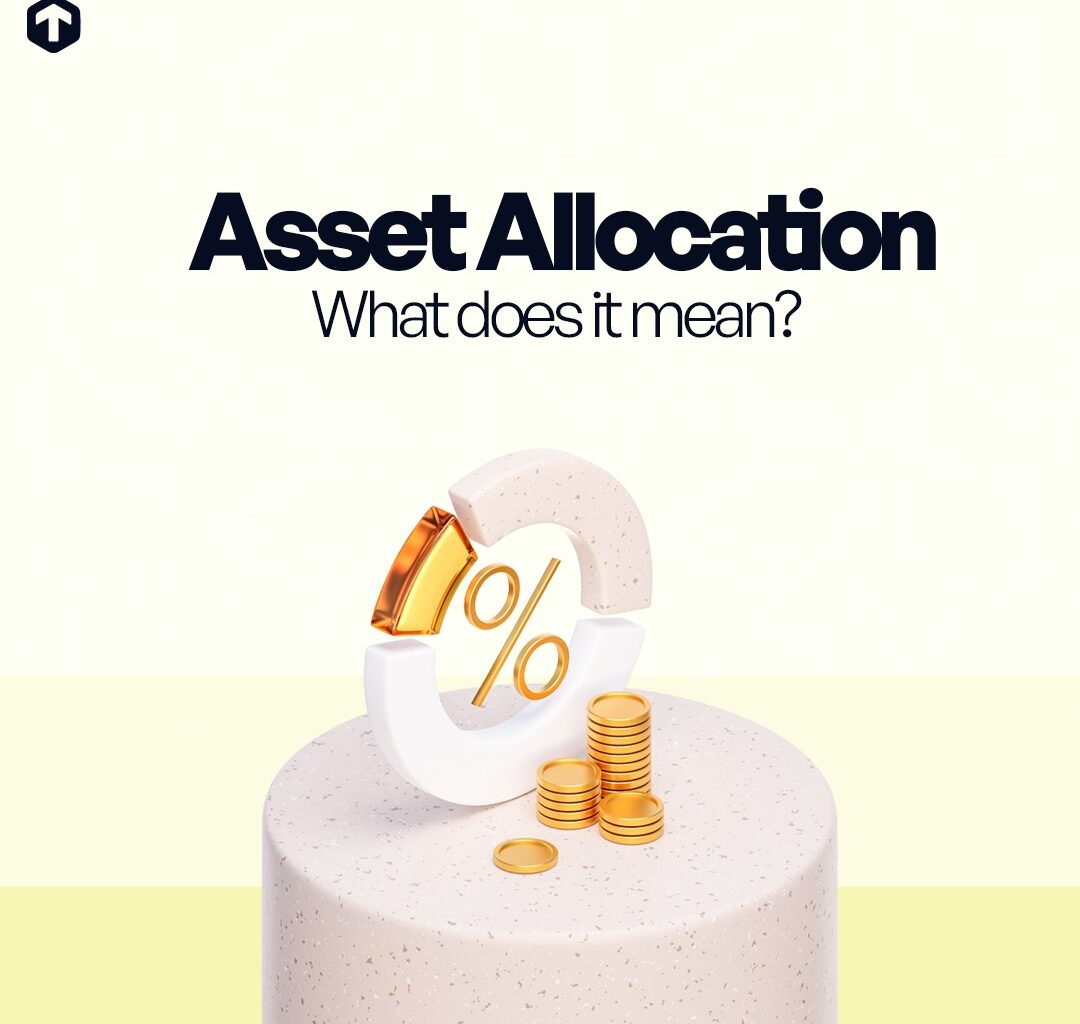When investing, an important concept to understand is Asset allocation. Tony Robbins said it best “The difference between success and failure in investing isn’t about picking the right stock or buying the right piece of real estate – it’s about asset allocation.”
This term can simply be defined as the process of dividing your money between different types of investments, like stocks, bonds, and cash. This strategy helps you manage risk and maximize your chances of success. It’s like building a fortress to protect your wealth against market ups and downs
In this blog post, we will find out what asset allocation is and how it works.

What is Asset Allocation?
Asset allocation is the process of dividing your money among different types of investments, like stocks, bonds, and cash. The goal is to create a well-balanced portfolio that can weather market ups and downs, while still providing growth potential over time. Think of it like building a house – you need to make sure the foundation is strong and the roof is secure. Asset allocation is all about building a solid financial foundation for your future.
Why is Assets Allocation Important?
One of the key importance of asset allocation is that it helps to manage risk. By spreading your money across different types of investments, you can reduce your overall risk if any one asset class performs poorly.
Also, proper allocation of assets increases your chances of earning a higher return over time. By investing in a mix of assets, you can potentially earn a higher return than if you only invested in one asset class.
Types of Asset Allocation Strategy
1. Strategic Asset Allocation
This asset allocation is all about finding the right balance between risk and return for your long-term investment goals. It’s not about chasing short-term gains or trying to predict market movements. Instead, it’s about creating a portfolio that can weather economic ups and downs, and remain on track to meet your goals over the long term. While this approach doesn’t try to time the markets, it does require regular monitoring and rebalancing to ensure your portfolio stays aligned with your goals
2. Dynamic Asset Allocation
Dynamic asset allocation is a bit like strategic asset allocation but with a twist. While both strategies aim to create a portfolio that can achieve the right balance of risk and return, dynamic asset allocation takes into account the economic environment.
This means that the portfolio can change over time, as the economic condition shifts. The idea is to adjust your exposure to different asset classes as conditions change, to help you stay on track to meet your goals. This asset allocation strategy is for investors who are comfortable with more active management.
3. Tactical Asset Allocation
This type of asset allocation is a bit more aggressive than strategic or dynamic strategies. Instead of sticking with an original asset mix, a tactical strategy actively seeks to take advantage of changes in the market environment.
This means that a tactical strategy may move into or out of its core asset classes entirely, as the portfolio manager spots opportunities or risks. This strategy is best suited for investors who are comfortable with taking on a higher level of risk in the pursuit of potentially higher returns
Asset Allocation vs Diversification: What’s the Difference?
It’s a common misconception that asset allocation and diversification are the same thing. But in reality, there are some key differences between them.
Now, let’s break it down.
Think of asset allocation as the big picture – it’s about creating a balanced, diverse portfolio by investing in different types of assets. Diversification, on the other hand, is about spreading your money within those assets – buying a variety of stocks, bonds, and other investments to reduce risk.

Read: Stocks vs Mutual Funds: Pros and Cons
Conclusion
Asset allocation is a critical factor in building a solid investment portfolio that will withstand market ups and downs. By carefully dividing your money between stocks, bonds, cash, and other assets, you can create a well-balanced portfolio that matches your goals and risk tolerance.
Remember, there’s no one-size-fits-all solution when it comes to asset allocation – the best strategy for you will depend on your unique circumstances. But with the right asset allocation, you can feel confident that your money is working hard for you.
To enjoy an easy asset investment journey, download the trove app.





